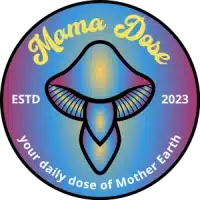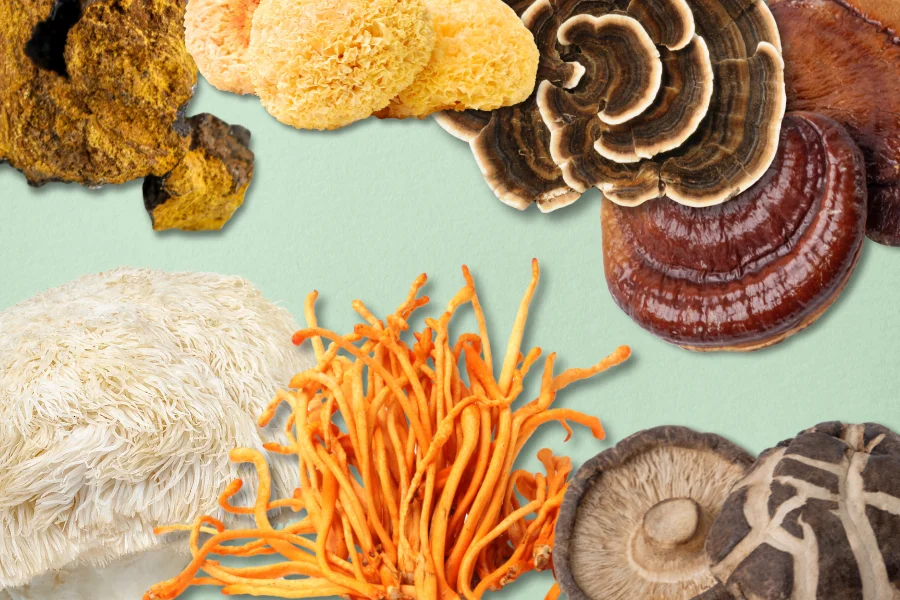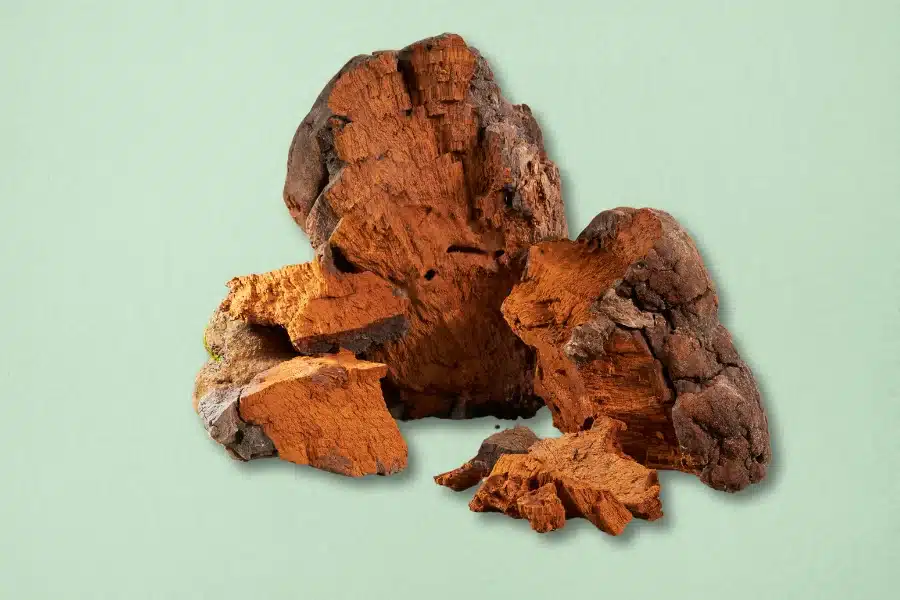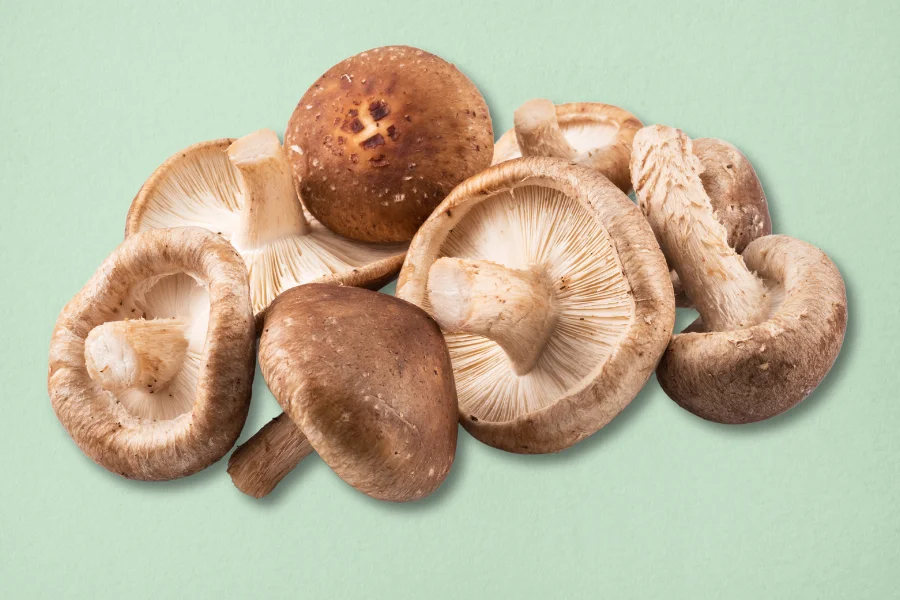
Table of Contents
Toggle
It’s no secret that mushrooms are booming. With Netflix documentaries like Fantastic Fungi and the fictional TV series The Last of Us, many people are getting interested in mushrooms and their benefits. Despite this recent trend, it’s well-known that functional mushrooms can contribute to improving overall well-being, their use stretches back millennia, particularly in ancient Chinese, Greek, and Egyptian medicine. [1]
What makes functional mushrooms different from the regular household types like button, oyster, and morel mushrooms? Are the health benefits linked with these adaptogenic mushrooms trustworthy? That’s exactly what we’re going to find out, as well as list seven of the most notable species.

Reishi mushroom, known as Ling Zhi in traditional Chinese medicine, is one of the most popular functional mushrooms today. With a history spanning thousands of years, Reishi has been highly valued as a top-tier tonic, supporting overall health, vitality, and resilience. [2]
This mushroom species is considered to be a powerful adaptogen. This means that it may help the body handle stress. It’s rich in immune-boosting vitamins such as B, C, E, and D, and also contains beta-carotene which can contribute to digestive and eye health. [3]
According to a review published in 2021, Reishi may have therapeutic potential in addressing various health issues such as inflammation, diabetes, heart disease, liver disease, cancer, and mood-related ailments. However, the review notes that there’s a lack of solid evidence to back up these claims, stating that research on Reishi is in the early stages and emphasizing the necessity for further clinical trials. [4] [5]

Lion’s mane is also one of the well-known functional mushrooms that are also used for culinary purposes. If you have ever researched microdosing products you probably stumbled upon formulas that combine Lion’s mane, psilocybin, and niacin, which in a famous microdosing stack created by Paul Stamets. According to research, what sets this mushroom apart is its natural nootropic properties, capable of enhancing mental performance.
Animal studies indicate that lion’s mane mushrooms enhance cognitive function, particularly memory and visual recognition. It may also have the ability to increase the production of nerve growth factor (NGF) which could be beneficial for regulating brain function and structural changes. [6] [7]
With high levels of antioxidants, Lion’s Mane may also be beneficial for mood enhancement, increased immune system response, and gut health. It also aids in maintaining healthy inflammation levels and blood sugar levels in the body. Considering these multifaceted actions, Lion’s Mane aligns with its traditional use in Chinese medicine as a tonic, supporting overall health and vitality. [8]

Chaga isn’t technically a mushroom, instead, it’s a sclerotium; a mass of mycelium that protects the organism from harsh environments. While it might resemble charcoal from the outside, the insides are filled with immune-boosting antioxidants.
According to studies, Chaga has the ability to boost the immune system by increasing white blood cell production, activating natural killer cells, and regulating the functions of T cells and B cells. This immune-stimulating property helps protect against viruses, bacteria, and infections. [9] [10]
Chaga may also enhance physical and performance. Studies have found that it can effectively increase glycogen levels in the liver and muscles while decreasing lactic acid in the blood. [11]

You have probably heard about Cordyceps if you watched the famous TV series “The Last of Us.” Don’t worry it won’t turn you into an infected mutant, instead, it may help you improve your overall well-being. Cordyceps has been used by traditional healers of Tibet for centuries, and it is believed to address a broad spectrum of health issues.
Studies suggest that cordyceps mushrooms may positively impact respiratory health, various types of cancer, blood sugar regulation, kidney disease, and overall inflammation in the body. Additionally, research indicates that Cordyceps boosts the production of adenosine triphosphate (ATP), a primary energy source for cells, particularly muscles. Both athletes and non-athletes have reported significant increases in endurance and physical capabilities following Cordyceps consumption. [12][13] [14] [15] [16]

Turkey tail mushrooms’ striking appearance is well known. The fan-shaped mushroom with various shades of brown strikingly resembles the tail of a real turkey, hence the name. There is evidence to support the idea that turkey tail is a nonspecific immune modulator, which means that by lowering body inflammation and functioning as an antioxidant, it strengthens the immune system as a whole. [17]
A 2023 study has shown that turkey tail mushrooms may be beneficial for fighting gastric, Breast, and Colorectal Cancer. Additionally, they’re rich in beta-glucans, as well as vitamin D and B vitamins, which can be great for combating obesity. [18] [19]

Tremella mushrooms have a fascinating and extensive history of use in traditional medicine, Chinese believe that tonic made from this mushroom can be an effective beauty aid. Studies have indicated that Tremella possesses remarkable hydrating properties, surpassing even the widely acclaimed hyaluronic acid. Additionally, it has been found to combat free radicals and inflammation, potentially enhancing skin appearance by providing a refreshing effect and aiding in the prevention and improvement of wrinkles. [20]
Beauty is not the only thing this mushroom variety is good for. According to research tremella mushrooms possess antioxidant, antitumor, immune-modulating, blood sugar-regulating, and neuroprotective properties. It is also rich in essential nutrients such as B vitamins, vitamin D, zinc, copper, calcium, and iron. [20] [21]

Many people don’t even realize that Shiitake mushrooms are indeed functional and not only a gourmet mushroom. While these delicious mushrooms have been used in East Asian cuisine for millennia, research about their health-promoting potential is relatively new.
It has been shown that the beta-glucans in shiitake mushrooms stimulate a variety of immune cells, including dendritic cells, which are essential to the functioning of the natural immune system. Furthermore, shiitake boosts the synthesis of antibodies and activates T and B cells, which helps the adaptive immune system. These substances also support a healthy inflammatory response and a certain peptide from shiitake mushrooms has been linked to enhanced insulin sensitivity and help maintain normal blood sugar levels. [22] [23] [24]
Furthermore, shiitake mushrooms contain a constituent known as eritadenine, which supports healthy cholesterol and blood pressure levels. Alongside several other bioactive compounds found in shiitake, eritadenine collectively contributes to its actions in supporting liver health and protection. [25]
[1] Stamets P, Zwickey H. Medicinal Mushrooms: Ancient Remedies Meet Modern Science. Integr Med (Encinitas). 2014 Feb;13(1):46-7. PMID: 26770081; PMCID: PMC4684114.
[2] Wachtel-Galor S, Yuen J, Buswell JA, et al. Ganoderma lucidum (Lingzhi or Reishi): A Medicinal Mushroom. In: Benzie IFF, Wachtel-Galor S, editors. Herbal Medicine: Biomolecular and Clinical Aspects. 2nd edition. Boca Raton (FL): CRC Press/Taylor & Francis; 2011. Chapter 9.
[3] El Sheikha, A. F. (2022). Nutritional Profile and Health Benefits of Ganoderma lucidum “Lingzhi, Reishi, or Mannentake” as Functional Foods: Current Scenario and Future Perspectives. Foods, 11(7), 1030. doi.org/10.3390/foods11071030
[4] Ahmad R, Riaz M, Khan A, Aljamea A, Algheryafi M, Sewaket D, et al. Ganoderma lucidum (Reishi) an edible mushroom; a comprehensive and critical review of its nutritional, cosmeceutical, mycochemical, pharmacological, clinical, and toxicological properties. Phytother Res. 2021;35(11):6030-6062. doi.org/10.1002/ptr.7215
[5] Sliva, D. (2003). Ganoderma lucidum (Reishi) in cancer treatment. Integrative Cancer Therapies, 2(4), 358-364. doi.org/10.1177/1534735403259066
[6] Ratto, D., Corana, F., Mannucci, B., Priori, E. C., Cobelli, F., Roda, E., … Rossi, P. (2019). Hericium erinaceus Improves Recognition Memory and Induces Hippocampal and Cerebellar Neurogenesis in Frail Mice during Aging. Nutrients, 11(4), 715. doi.org/10.3390/nu11040715
[7] Szućko-Kociuba, I., Trzeciak-Ryczek, A., Kupnicka, P., & Chlubek, D. (2023). Neurotrophic and Neuroprotective Effects of Hericium erinaceus. International Journal of Molecular Sciences, 24(21), 15960. doi.org/10.3390/ijms242115960
[8] Chou, M.-Y., Ho, J.-H., Huang, M.-J., Chen, Y.-J., Yang, M.-D., Lin, L.-H., … Wang, M.-F. (2022). Potential antidepressant effects of a dietary supplement from the chlorella and lion’s mane mushroom complex in aged SAMP8 mice. Frontiers in Nutrition, 9, Article 977287. doi.org/10.3389/fnut.2022.977287
[9] Kim, Y.-R. (2005). Immunomodulatory Activity of the Water Extract from Medicinal Mushroom Inonotus obliquus. Mycobiology, 33(3), 158–162. https://doi.org/10.4489/MYCO.2005.33.3.158
[10] Kim, T. I., Choi, J.-G., Kim, J. H., Li, W., & Chung, H.-S. (2020). Blocking Effect of Chaga Mushroom (Inonotus oliquus) Extract for Immune Checkpoint CTLA-4/CD80 Interaction. Applied Sciences, 10(17), 5774. doi.org/10.3390/app10175774
[11]Zhong, X., Yue, Z., Yang, S., & Zheng, Z. (2015). Effect of Inonotus obliquus polysaccharides on physical fatigue in mice. Experimental Study. doi.org/10.1016/S0254-6272(15)30126-6
[12] Ko, K. M., & Leung, H. Y. (2007). Enhancement of ATP generation capacity, antioxidant activity and immunomodulatory activities by Chinese Yang and Yin tonifying herbs. Chinese Medicine, 2, 3. doi.org/10.1186/1749-8546-2-3
[13] Wang, N., Li, J., Huang, X., Chen, W., & Chen, Y. (2016). Herbal Medicine Cordyceps sinensis Improves Health-Related Quality of Life in Moderate-to-Severe Asthma. Evidence-Based Complementary and Alternative Medicine, 2016, 6134593. doi.org/10.1155/2016/6134593
[14] Lee, H. H., Lee, S., Lee, K., Shin, Y. S., Kang, H., & Cho, H. (2015). Anti-cancer effect of Cordyceps militaris in human colorectal carcinoma RKO cells via cell cycle arrest and mitochondrial apoptosis. Daru: Journal of Faculty of Pharmacy, Tehran University of Medical Sciences, 23(1), 35. doi.org/10.1186/s40199-015-0117-6
[15] Dong, Y., Jing, T., Meng, Q., Liu, C., Hu, S., Ma, Y., … Teng, L. (2014). Studies on the Antidiabetic Activities of Cordyceps militaris Extract in Diet-Streptozotocin-Induced Diabetic Sprague-Dawley Rats. BioMed Research International, 2014, 160980. doi.org/10.1155/2014/160980
[16] Sun, T., Dong, W., Jiang, G., Yang, J., Liu, J., Zhao, L., & Ma, P. (2019). Cordyceps militaris Improves Chronic Kidney Disease by Affecting TLR4/NF-κB Redox Signaling Pathway. Oxidative Medicine and Cellular Longevity, 2019, 7850863. doi.org/10.1155/2019/7850863
[17] Benson, K.F., Stamets, P., Davis, R. et al. The mycelium of the Trametes versicolor (Turkey tail) mushroom and its fermented substrate each show potent and complementary immune activating properties in vitro. BMC Complement Altern Med 19, 342 (2019). https://doi.org/10.1186/s12906-019-2681-7
[18] Dan, A., Swain, R., Belonce, S., & Jacobs, R. J. (2023). Therapeutic Effects of Medicinal Mushrooms on Gastric, Breast, and Colorectal Cancer: A Scoping Review. Cureus, 15(4), e37574. doi.org/10.7759/cureus.37574
[19] El Khoury, D., Cuda, C., Luhovyy, B. L., & Anderson, G. H. (2012). Beta Glucan: Health Benefits in Obesity and Metabolic Syndrome. Journal of Nutrition and Metabolism, 2012, 851362. doi.org/10.1155/2012/851362
[20] Mineroff, J., Jagdeo, J. The potential cutaneous benefits of Tremella fuciformis. Arch Dermatol Res 315, 1883–1886 (2023). doi.org/10.1007/s00403-023-02550-4
[21] Shahrajabian, M. H., Sun, W., Shen, H., & Cheng, Q. (2020). Chemical compounds and health benefits of Tremella, a valued mushroom as both cuisine and medicine in ancient China and modern era. American Journal of Phytomedicine and Clinical Therapeutics, 8, 107–118. doi.org/10.26545/ajpr.2020.b00077x
[22] Kim HS, Hong JT, Kim Y, Han SB. Stimulatory Effect of β-glucans on Immune Cells. Immune Netw. 2011 Aug;11(4):191-5. doi: 10.4110/in.2011.11.4.191. Epub 2011 Aug 31. PMID: 22039366; PMCID: PMC3202617.
[23] Roszczyk A, Turło J, Zagożdżon R, Kaleta B. Immunomodulatory Properties of Polysaccharides from Lentinula edodes. Int J Mol Sci. 2022 Aug 11;23(16):8980. doi: 10.3390/ijms23168980. PMID: 36012249; PMCID: PMC9409024.
[24] Shamim MZ, Mishra AK, Kausar T, Mahanta S, Sarma B, Kumar V, Mishra PK, Panda J, Baek KH, Mohanta YK. Exploring Edible Mushrooms for Diabetes: Unveiling Their Role in Prevention and Treatment. Molecules. 2023 Mar 21;28(6):2837. doi: 10.3390/molecules28062837. PMID: 36985818; PMCID: PMC10058372.
[25] Handayani, D., Meyer, B. J., Chen, J., Brown, S. H. J., Mitchell, T. W., & Huang, X.-F. (2014). A high-dose shiitake mushroom increases hepatic accumulation of triacylglycerol in rats fed a high-fat diet: Underlying mechanism. Nutrients, 6(2), 650-662. https://doi.org/10.3390/nu6020650
Invite your friends and earn a discount on your next purchase. Your friend also earns a discount! Get started now, by sharing your referral link with your friends.
This item is currently out of stock!
By adding it to your cart, you confirm a backorder purchase, and we will ship it as soon as it becomes available.